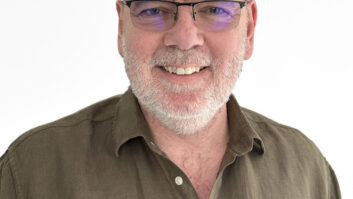
Why do you think there is a need for the DSO? And what were the initial aims?
From my point of view, such an organisation for our industry is important, because of the continuous changes the industry is undergoing. With a lot of new technology coming through, there are plenty of newcomers joining. Also, standards and practices keep changing. An association can give guidance in this variable environment, help evaluating what’s good and what’s not and offer education, training and best practices.
What is the ongoing strategy of the organisation?
The challenge that digital signage is facing is that one size never fits all. As DSO, we want to focus on identifying and demonstrating what signage means to different industries and applications, always having the view of the end user.
Let me give you an example: LED is quite topical at the moment. Everybody is talking about it. All the NEC customers are talking about LED in the boardroom or in the reception area. But very few have a clue about what the best practices are or of how to mount an LED wall, what components and technology are needed or how to differentiate between high and low quality. There are new companies popping up every five minutes, without anyone from the user perspective, saying ‘wait a minute, how do I install this, how do I run it on the network, what’s the correct resolution, should I use one screen or multiple screens.’ All these questions, there are answers to but there is no way to find them.
At DSSE Munich we covered this topic and there was standing room only. It was amazing to see all these industry professionals crammed in a room wanting to learn about a relatively new segment of our industry,
By sharing best practices and providing thought leadership and informed opinion about the myriad of solutions, methods and opportunities, the DSO wants to help the industry grow together.
How does your membership breakdown in terms of manufacturers, integrators, distributors and end users?
The DSO is targeted to all people in the industry – from the consultant, to the distributor to a reseller, to a manufacturer – all the way through the supply chain. But actually, and most importantly, we want end users as members of the association as well. Because it’s the end users who can share their experience in terms of whether a solution is good or bad and bring up important questions.
“It’s simply not possible to create standards in digital signage – there are too many variances”
What are the key best practices that you want to instil in your membership?
First of all we should say we are not a standards organisation. It’s simply not possible to create standards in digital signage – there are too many variances. What the DSO will do is to break down the different vertical markets, different applications and show what digital signage means for the different industries. Digital signage in education is different than in corporate, and the public sector has other needs than the transportation industry or in retail for example. Although there are many similarities, there are also major differences. And if you are in the industry or coming into the industry, demystifying and breaking down digital signage into more usable and understandable segments will help the industry more than talking about it as one big cake.
How successful do you think the organisation has been at getting its core message out and fulfilling its mission statement?
The challenge that the DSO is facing is that there is no one working on it full-time. All of the board members have quite busy and demanding jobs. So yes, it takes time to get it off the ground, to have the website set-up, register the company – all these things by doing them part-time do take longer than we would want them to.
But as long as our members see some value to the membership and are happy with the direction we are going, we hope to count on their patience and the time to establish ourselves. As soon as we have completed the first steps, we definitely plan to also focus on educational programmes, supplier directories, market overviews and media partnerships.
“Right now digital signage is occupying a higher percentage of the CTO’s diary than ever before”
What were some of the big takeaways from DSS 2019?
Firstly that the industry is in rude health. The atmosphere was very positive and the conversations I had always circulated around opportunity and optimism. I also spotted a sense of urgency – to succeed that is. There are threats to the industry as there will always be, but right now digital signage is occupying a higher percentage of the CTO’s diary than ever before and whilst that’s a good thing it brings increased competition and established relationships to your existing or potential customers. So there can be a need to re/establish your identity.
How do you think that event has developed over the last couple of years?
I think it was the right thing to return to Munich after their Frankfurt sabbatical. It feels a natural home and there are a lot of tech-based companies there. The balance is right between networking and conferencing and I guess the only real improvement would be to continue to give it a more European flavour – it’s quite German-centric in terms of attendees, as you would expect, but this year I think they had more international visitors and certainly the panels had a wide range of nationalities and experience.
What do you see as the big trends in digital signage over the next few years?
One recurring theme that doesn’t show any signs of slowing is the rate of M&A’s in our industry. Get big or get out, you could say, but in such a fractured and dynamic industry there will always be room for innovators and agitators.
Global service requirements are becoming commonplace amongst the bigger companies as they look to develop rapid deployment methods with ever more efficient maintenance models.
Technology-wise we are starting to see what big data and AI means to digital signage and this will surely help with the all too often intangible ROI questions, as well as provide much better control and relevance to the technology and content.
Digital signage usage differs from industry to industry. What industries consistently utilise digital signage in the most dynamic ways?
Well it’s easy to look at retail and say how impressive some of the installations are across the world, certainly in flagship stores where ROI is less relevant, and impact is everything. But retail is still a market with huge potential outside the major stores and cities, so it has a long way to go. I think for sheer innovation, the most impressive installations I have seen come from the leisure and museums sector. Here the budgets can be more generous toward ‘art’ installations or to provide ingenious ways of impressing the visitor. The canvasses are often large and this means technologies like projection and LED can provide ever more impressive displays, and then of course the content is not bound by a typical 16:9 format so the creative agencies can have a field day!
Do you have a roadmap for how you’d like the organisation to develop over the next five years?
We want to educate, learn and teach people best practices. Our members will have access to a database of articles, which we already started to build up including reports, case studies and whitepapers. Of course, networking will be a big part as well. We are planning to attend two to three events a year, including ISE (Integrated Systems Europe), the DSS (Digital Signage Summit) and another event in Autumn.







